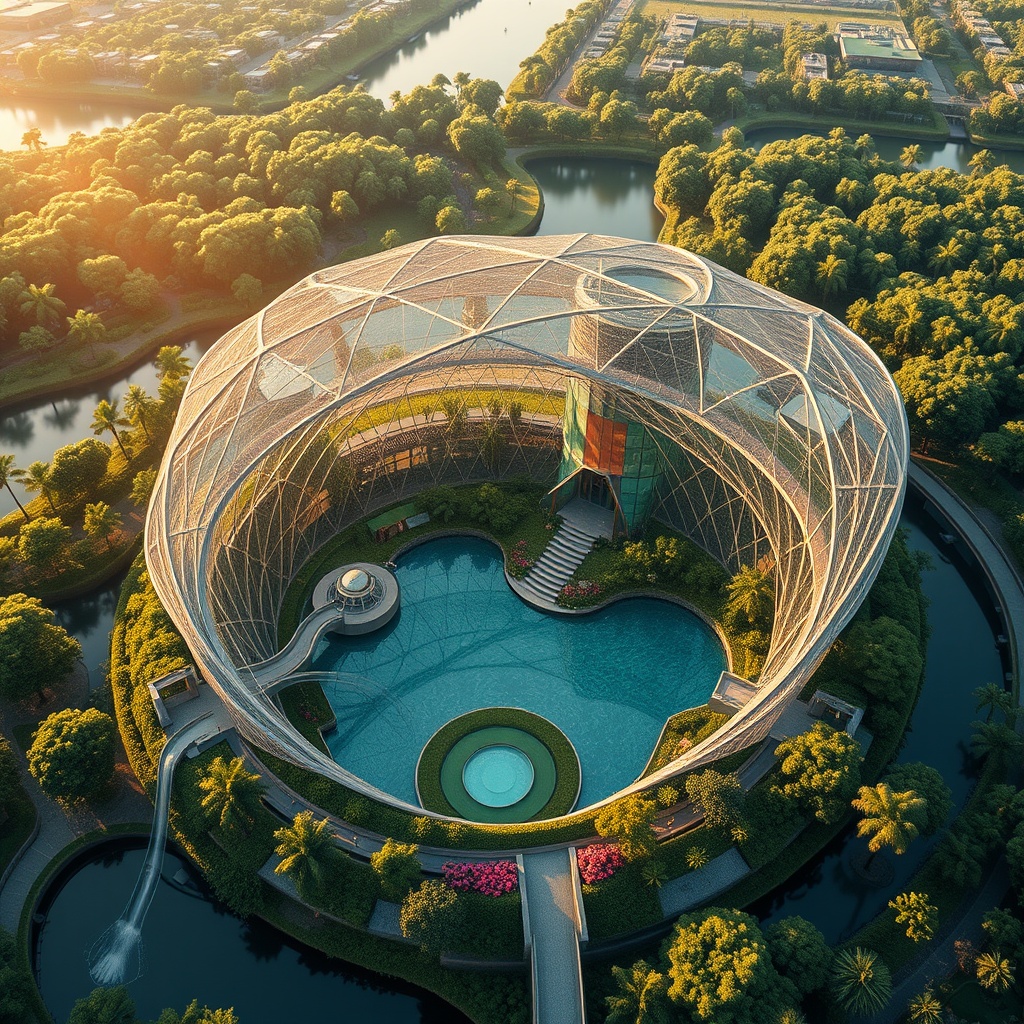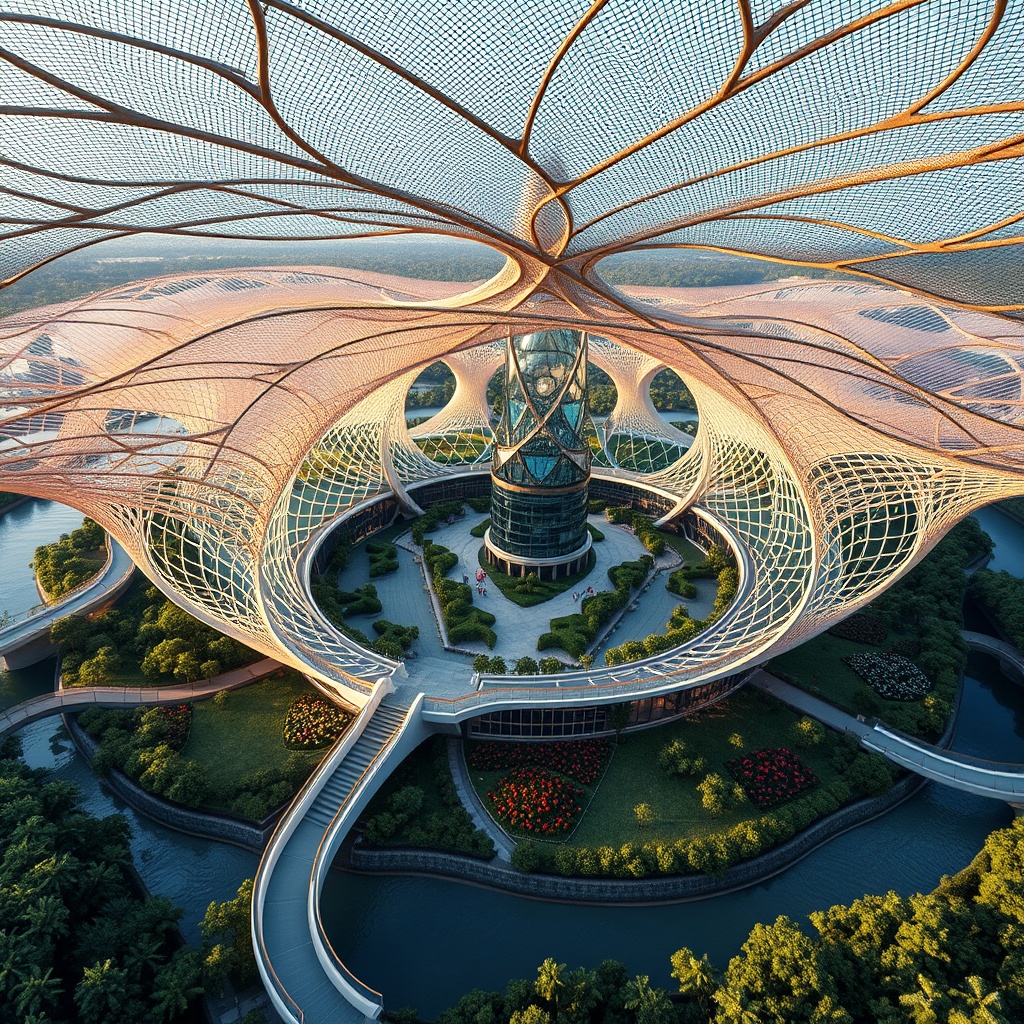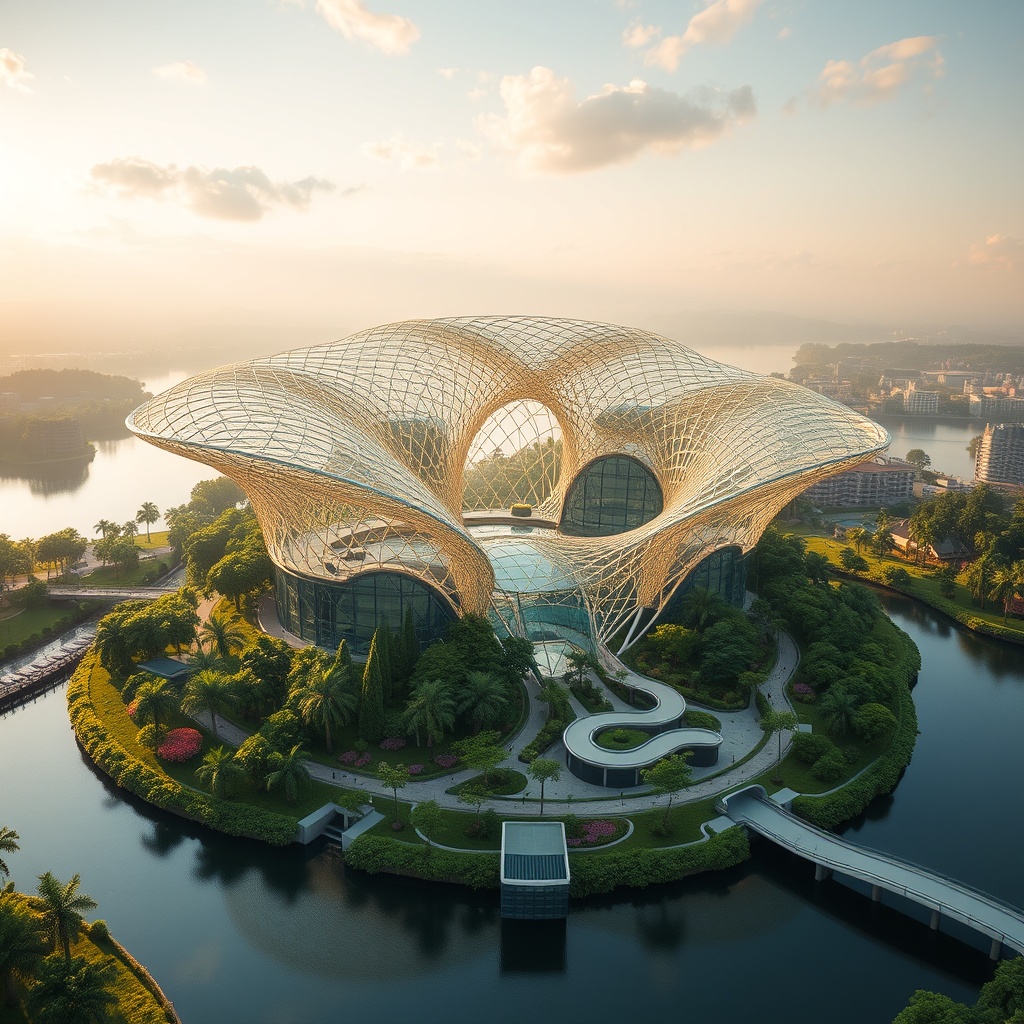

Introduction:
The future of architecture is being redefined by sustainability, innovation, and aesthetics that align with natural surroundings. Modern eco-cities are emerging as shining examples of how urban planning, architecture, and interior design can seamlessly integrate functionality with ecological consciousness. This article delves into the captivating realm of futuristic architecture, offering practical tips for architects and interior designers to create inspiring, sustainable spaces.
The Vision of Futuristic Architecture
Futuristic architecture combines technology, ecology, and innovative design principles. The images here showcase key elements of modern architecture: organic forms, interconnected spaces, and the use of natural lighting to enhance both beauty and efficiency.

Key Features:
1. Nature-Inspired Forms: Structures mimicking natural forms like flowers, leaves, and organic patterns blend beautifully with the environment.
2. Transparent Facades: Glass domes and mesh-like exteriors allow natural light to flood interiors, minimizing energy use.
3. Eco-Friendly Design: Integrating greenery within buildings ensures cooling effects, cleaner air, and visual appeal.
4. Floating Structures: Surrounded by water, these designs signify resilience against climate change.

Practical Design Tips for Architects
1. Biophilic Integration: Incorporate greenery into your designs through vertical gardens, green roofs, or internal atriums.
2. Focus on Renewable Energy: Plan for solar panels, wind energy, and water conservation systems to create self-sustaining structures.
3. Blend Innovation with Tradition: Mix modern materials with locally sourced, sustainable options to reflect cultural heritage.
4. Enhance Urban Mobility: Include walkways, bicycle-friendly pathways, and eco-friendly transportation solutions in city planning.

Interior Design Tips for Eco-Friendly Homes and Offices
1. Sustainable Materials: Use recycled wood, bamboo, and eco-friendly composites.
2. Smart Technology: Employ automated lighting, climate control, and energy-efficient appliances.
3. Natural Elements: Highlight the role of natural light, ventilation, and greenery for health benefits and cost-efficiency.
4. Modular Furniture: Opt for multi-functional furniture to save space and reduce waste.
The Role of Eco-Cities in Shaping the Future
Eco-cities like the ones depicted in these images act as prototypes for sustainable urban living. They demonstrate how interconnected systems for water, energy, and transportation can create an environmentally friendly yet luxurious living experience.
